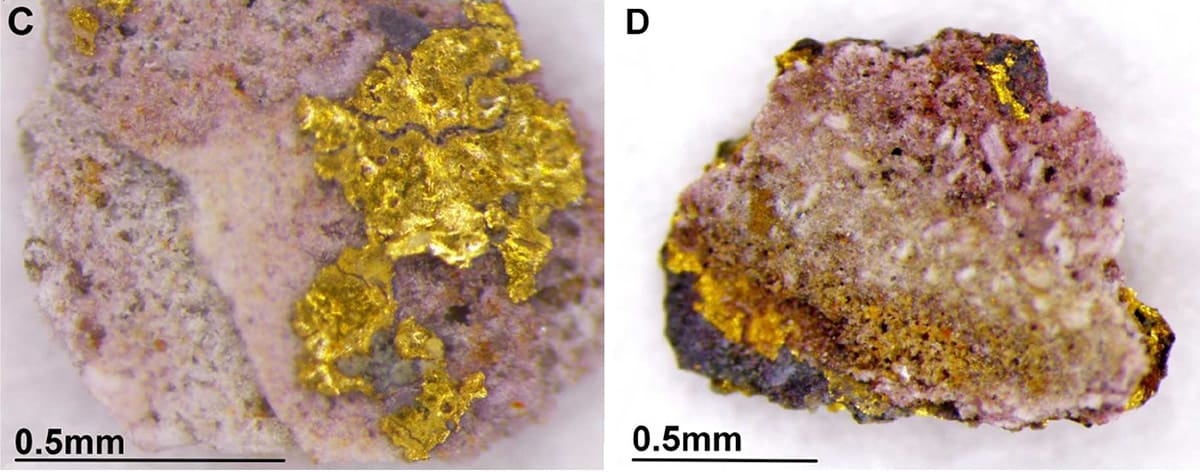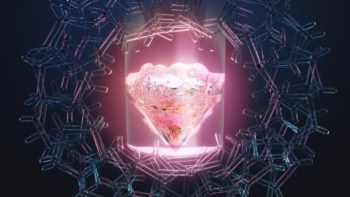
Overlooking the city of Granada in southern Spain, the Alhambra palace and fortress is an icon of the Islamic Golden Age. Now, researchers at the University of Granada may have solved one of its modern mysteries: why sections of its gold decorations are turning purple.
Constructed principally between the 13th and 14th centuries by the Nasrids – the last Muslim dynasty in the Iberian Peninsula – the Alhambra contains colourful geometric patterns throughout its rooms, courtyards and gardens. “The Nasrids had a fear of empty space, so they filled the walls with tiles, paints and other decorative features,” says Carolina Cardell, a mineralogist who led the research.
During a restoration in the 19th century, many of the Alhambra’s deteriorating walls were covered in a thin layer of gypsum plaster, rendering them a beige colour. Then, beginning in the 1990s, staff noticed a purple discolouration forming on plasterwork in some of its muqarnas, which are honeycomb-like decorations in the ceilings created from tin gilded with gold.
Purple haze
After analysing samples using electron microscopes fitted with spectroscopes, Cardell and her colleague Isabel Guerra believe they finally understand the source of the discolouration. Nanoparticles, they say, are forming in the gold surfaces due to a two-step corrosion process. Because these nanoparticles are 70 nm in diameter, their surface electrons oscillate in resonance with incident light, creating a purple shimmer.
Step one in the corrosion process stems from the same phenomenon that causes screws in a garden shed to corrode at different rates from the metal structures they hold together. When two metals in electrical contact are exposed to humidity, the least “noble” one will react with the environment. At the Alhambra, imperfections in the gold gilding meant that, over time, tiny bits of tin began poking through to the surface and forming compounds upon reaction with the atmosphere.

While the gold in the muqarnas is unaffected by this so-called galvanic corrosion, it nevertheless becomes soiled from the breakdown of tin compounds. Sections of the gold surface beneath this grime are then deprived of oxygen, allowing tiny anode–cathode cells to form and leading to dissolution in the oxygen-deficient areas. Over the centuries, this second corrosion step has sculpted the gold surfaces, leaving them scarred by pits and nanoparticles.
Corrosive marine breath
Both phases of the corrosion are exacerbated by high concentration of chlorides in the local atmosphere, which act as an electrolyte. Even though Granada is more than 50km inland, chlorides are brought to the city via marine aerosols.
Cardell emphasizes that the purple colouration is only seen in semi-open areas exposed to the highest humidity. “Visitors would be unlikely to notice, but you will see them if you know where to look,” she says. Jose Maria Bastidas, at Spain’s National Centre for Metallurgical Research in Madrid, fears that the damage to the affected gold is irreversible. “This work shows the importance of maintaining stable temperatures and relative humidity wherever possible,” he said.
Part of the challenge for conservators is determining whether gold colouration is intentional. Since Roman times, artisans have created purple pigments by dissolving gold in a solvent called aqua regia (HNO3 + HCl). The Ancient Egyptians were also known to create “red gold” by tarnishing the metal’s surface with silver–gold sulfide.

Watching iron rust produces new insights on corrosion
“For the most part, our lack of understanding of why gold tarnishes really influences the decisions we make for treating the object,” says Jessica Routleff-Jones, a metals conservator based in London who has worked with several national museums. “If this research could categorically say that the patination is a by-product of the environment and not there because of human intervention, then we might be more inclined to remove it by polishing.”
David Hradil, an inorganic chemist at the Czech Academy of Sciences, is impressed by the novelty of the research, which is published in Science Advances. “In technology there are various ways to prepare purple gold nanoparticles, but I have not yet come across such a mechanism of spontaneous degradation of gold,” he says.



